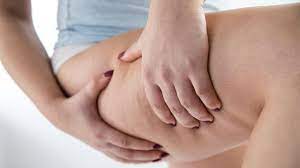Lipedema, a chronic condition characterized by an abnormal build-up of fat in the legs, thighs, and sometimes arms, has long faced challenges in diagnosis and treatment. Despite affecting millions of individuals, particularly women, it remains Lipedema and poorly understood. However, recent advancements in research and technology are offering hope through innovative approaches to therapy. These approaches not only address physical symptoms but also aim to improve the quality of life for those living with the condition.
Understanding Lipedema and Its Impact
Lipedema is often misdiagnosed as obesity, making it difficult for those affected to seek appropriate treatment. Unlike typical fat, lipedema fat does not respond to traditional weight-loss methods, such as dieting or exercise. Studies suggest that approximately 11% of women may be impacted by lipedema, highlighting the significant need for specialized care and innovative solutions.
Symptoms such as leg heaviness, tenderness, and the disproportionate accumulation of fat can severely limit mobility and lead to feelings of frustration, stress, and low self-esteem. Recognizing the need for multidimensional therapy has spurred researchers and healthcare providers to explore alternative methods that better address these complex challenges.
Emerging Therapies Transforming Lipedema Care
1. Advanced Surgical Techniques
While liposuction has been traditionally used for some cases of lipedema, the procedure has evolved significantly with the introduction of water-assisted liposuction (WAL). WAL minimizes trauma to surrounding tissues while effectively removing diseased fat. This technique reduces recovery time, pain, and swelling, making it a promising choice for individuals seeking relief from symptoms.
2. Lymphatic Drainage Innovations
Since lipedema often causes lymphatic dysfunction, therapies targeting this system have gained traction. Manual lymphatic drainage (MLD) remains a widely recommended approach, but advancements in compression therapies, such as intelligent compression garments, are optimizing patient outcomes. These garments, designed with smart textiles, enhance lymphatic flow and adapt to the user’s specific needs.
3. Holistic and Nutritional Management
Innovative dietary plans tailored to reduce inflammation and promote overall lymphatic health are gaining attention. Anti-inflammatory foods and nutritional interventions that lower water retention have significantly improved well-being in some individuals. Complementing these dietary plans with physiotherapy has shown promise in improving mobility and managing pain.
4. Emerging Role of Regenerative Medicine
Regenerative medicine is turning heads as a potential breakthrough in lipedema therapy. Stem cell research and fat transplantation techniques are being explored to repair damaged tissue and improve lymphatic function. While still in early stages, these developments could revolutionize treatment and offer hope to millions.
A Growing Focus on Lipedema Awareness
The drive to increase awareness around lipedema is fueling research and innovation. Experts emphasize early diagnosis as key to effective management, which has led to the integration of imaging technology into routine assessments. State-of-the-art imaging tools, including 3D body scans, are helping healthcare providers more accurately identify lipedema-related fat and tailor treatment approaches.
Looking Ahead
Innovative approaches in lipedema therapy represent a significant shift toward comprehensive care. By combining advanced technology, individualized treatments, and holistic strategies, healthcare providers are crafting a brighter future for those navigating this complex condition. Continued research and awareness are essential to unlocking even greater possibilities for improved quality of life.


